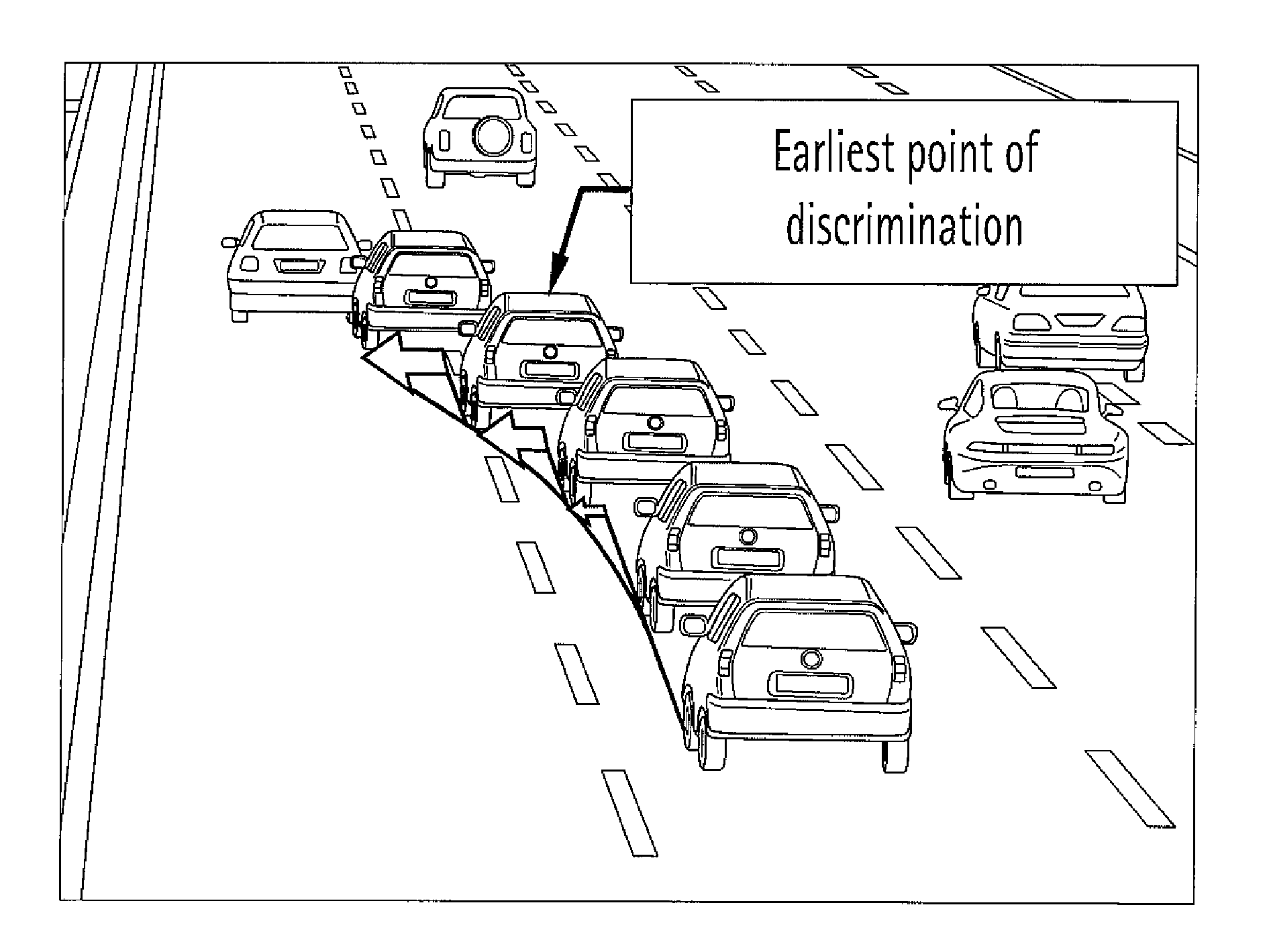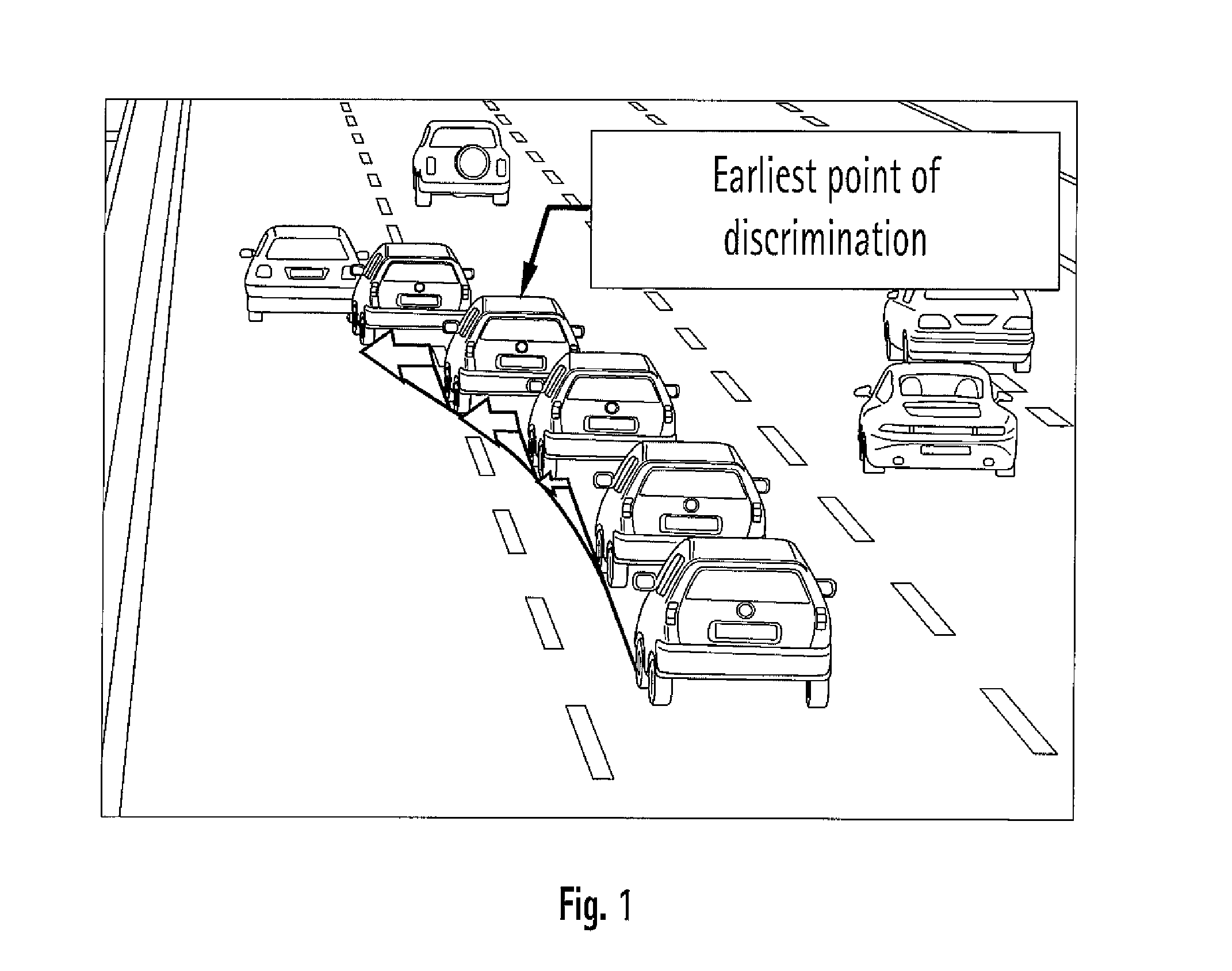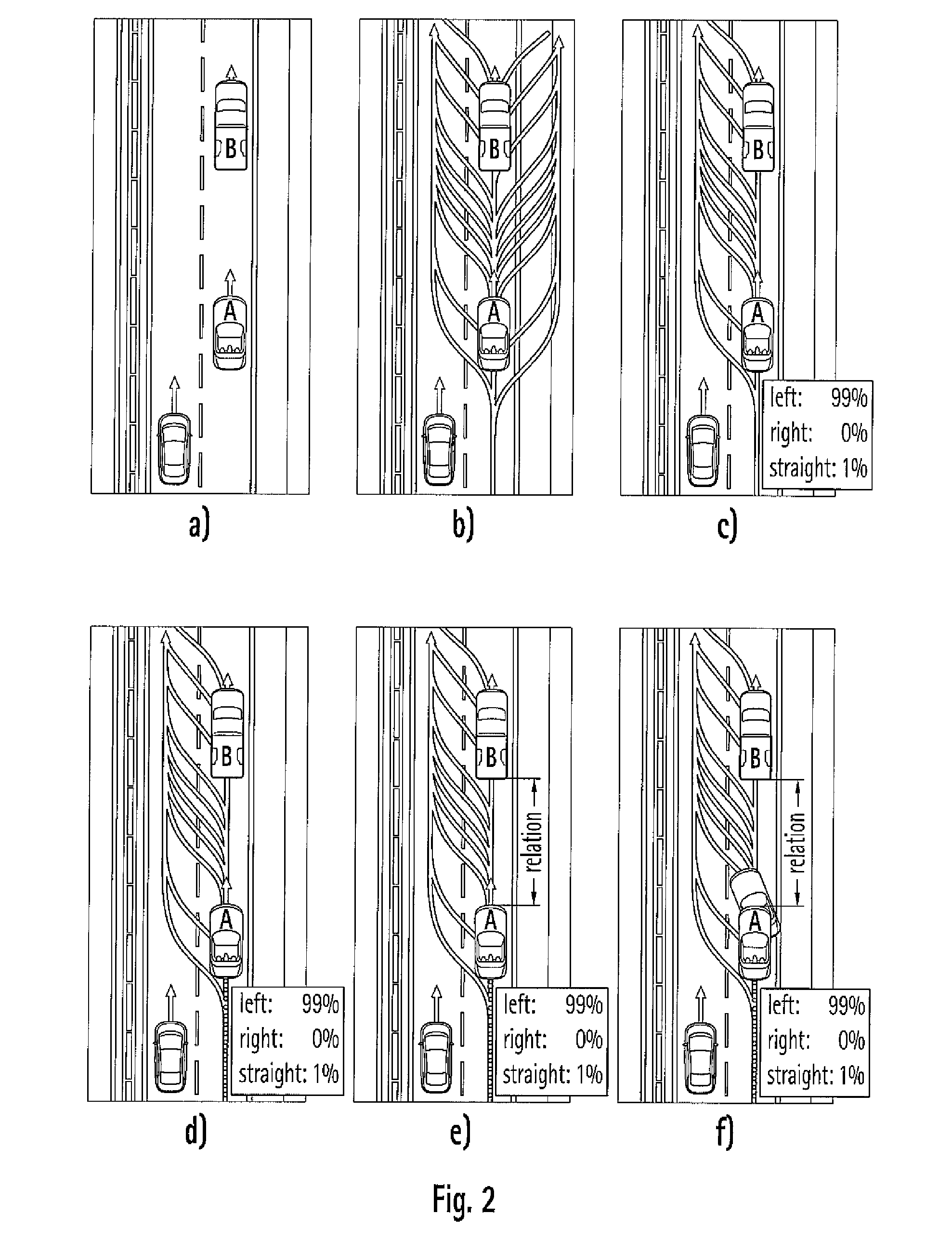Method and system for predicting movement behavior of a target traffic object
a technology for traffic objects and methods, applied in scene recognition, pulse techniques, instruments, etc., can solve problems such as delayed reaction of driver assistant systems, underruns of safety distances, and delays in driver assistance systems, and achieve the effect of quick overtaking process
- Summary
- Abstract
- Description
- Claims
- Application Information
AI Technical Summary
Benefits of technology
Problems solved by technology
Method used
Image
Examples
Embodiment Construction
[0041]The inventive system and method is now described in view of the figures.
[0042]The method according to the invention assumes to be performed on / by the host-vehicle or a respective computing system on board of the host-vehicle being equipped with one or more sensors.
[0043]The computing system relates to a system for performing the necessary computing or calculation operations. This system may be specially constructed for this purpose, or it may comprise at least a general-purpose computer selectively activated or reconfigured by a computer program stored in the computer. The computing system can also consist of a network of (different) processors.
[0044]Such a computer program and also data required for its execution may be stored in a computer readable storage medium, such as, but is not limited to, any type of disk including floppy disks, optical disks, CD-ROMs, magnetic-optical disks, read-only memories (ROMs), random access memories (RAMS), EPROMs, EEPROMs, magnetic or optica...
PUM
 Login to View More
Login to View More Abstract
Description
Claims
Application Information
 Login to View More
Login to View More - R&D
- Intellectual Property
- Life Sciences
- Materials
- Tech Scout
- Unparalleled Data Quality
- Higher Quality Content
- 60% Fewer Hallucinations
Browse by: Latest US Patents, China's latest patents, Technical Efficacy Thesaurus, Application Domain, Technology Topic, Popular Technical Reports.
© 2025 PatSnap. All rights reserved.Legal|Privacy policy|Modern Slavery Act Transparency Statement|Sitemap|About US| Contact US: help@patsnap.com



